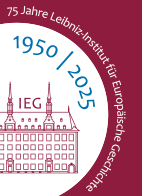The match – a European economic, technological and environmental history
In the 1820s, a British pharmacist developed the first match, replacing highly flammable phosphorus and sulphur-containing matches. A Swedish chemist perfected the technology and invented a new match in the 1840s: the safety match. While sulphur and white phosphorus had previously played a prominent role in the production of matches, the safety matches used the much less dangerous red phosphorus and potassium chlorate.What was also unique about them was the separation of the oxidising agent and the lighter. Match factories were established in many countries such as France, Great Britain, Hungary, Germany and the USA at the end of the 19th century. One of the most significant production increases occurred in Jönköping (Sweden), where the first match factory exported worldwide.
With my research project, I would like to write a transnational, northern European entangled history of the matchstick. In doing so, I will focus primarily on questions of business, environmental and knowledge history. The chemical-technological development of matches and the entrepreneurial production methods already show a strong transnational character. With regard to the required materials such as wood, phosphorus, potassium chlorate or paraffin, specific commodity chains can be traced, and the concept of 'workscapes' can be tested. Economic competition led to new production methods, state taxation, and monopolisation. Sweden emerged as the world market leader at the beginning of the 20th century. The concept of conviviality will be used to examine economic competition, factory hierarchies, and human-environment relationships.
The transnational perspective allows the regional, economic, and systemic specifics of national corporate matchstick production and their entanglements to be worked out. The history of the match can, therefore, be used to pose questions relating to environmental, technological, and industrial history and recognise a growing awareness of health issues and occupational safety.


